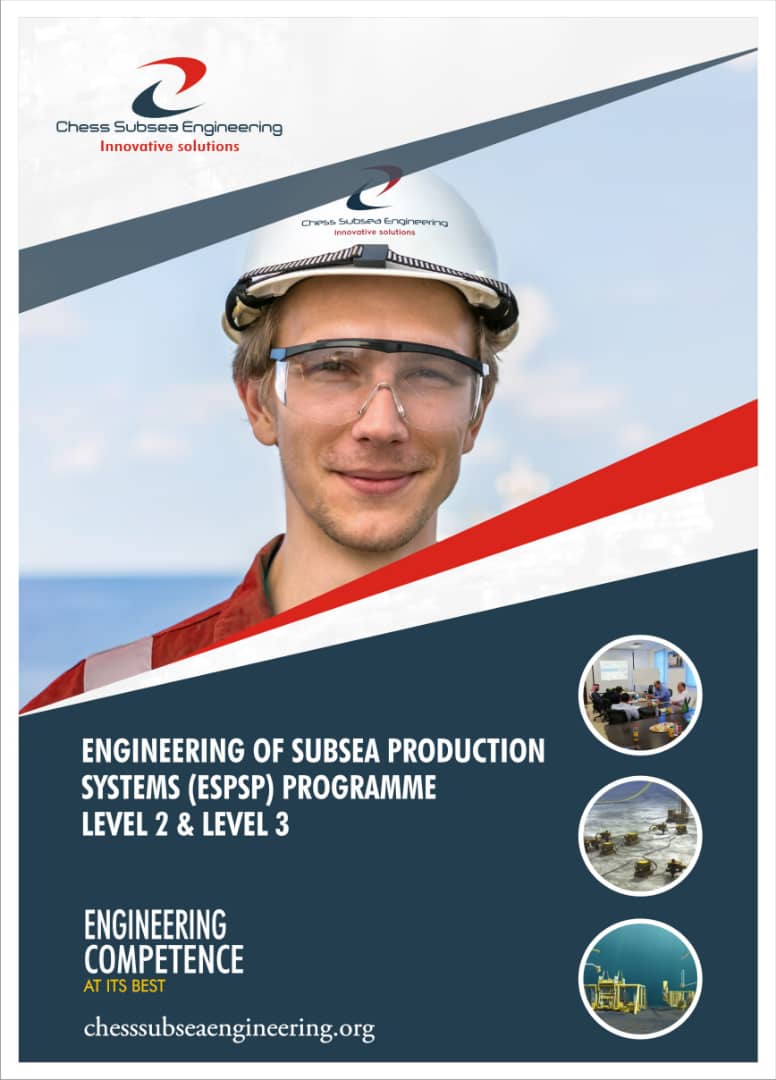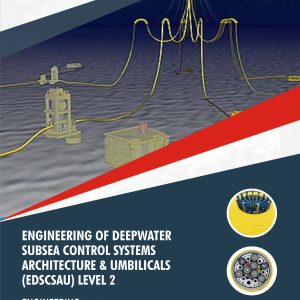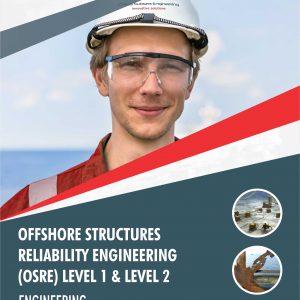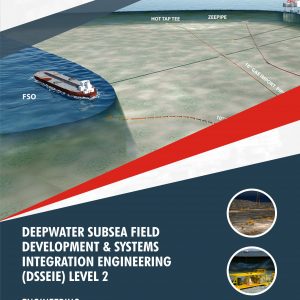Description
The Engineering of Subsea Production Systems (ESPSP) Programme is a comprehensive course that covers the design, operation, and maintenance of subsea oil and gas production systems. The program is divided into three levels, each focusing on different aspects of subsea production systems.
Level 1 provides an introduction to subsea production systems, including their historical development, key components, and their functions. It covers topics such as subsea field development, subsea equipment and components, subsea control and monitoring, and flow assurance challenges.
Level 2 focuses on advanced topics such as subsea system integration, well intervention and maintenance, reliability and integrity management, and project management principles specific to subsea production systems.
Level 3 delves into more specialized areas, including subsea tieback systems, advanced production control strategies, subsea asset life extension, and emerging technologies in subsea production.
Throughout the program, students will learn about subsea equipment, control systems, flow assurance techniques, and the integration of subsea systems with topside facilities. They will also gain knowledge in risk management, inspection, maintenance, and the use of advanced technologies for subsea operations.
Engineering of Subsea Production Systems (ESPSP) Programme Level 1 to Level 3 covers in details Engineering of Subsea Production Systems at Level 2 & Level 3 with focus on Subsea Field Architecture, Subsea Distribution Systems, Subsea Control Systems, Subsea Project Execution & Interfaces, Subsea Surveys, Installation & Vessels, Deepwater or Shallow-Water Development, Deepwater or Shallow-Water Development Systems Selection, Wet Tree and Dry Tree Systems, Subsea Tie-Back Development, Offshore Hydrography, Site Investigation, Geophysical and Geotechnical Assessment Techniques i.e. Sidescan Sonar, Seismic Profiler, Magnetometer, CPT Cone Penetration, Vibro Corer etc, Case Studies, Soil Parameters for Engineering Design, Offshore Dredging, Subsea Systems Positioning & Metrology, Ultra Short Baseline System (USBL), Long Baseline Systems (LBL) etc., Types of Survey Sensors i.e. Sonar, Heading, Attitude / Motion, Aiding Sensors, Depth e.t.c, Offshore Structures – Design, Transportation & Installation – Intro, Subsea structures installations, Subsea Structures Installation Engineering i.e. FATs, SIL, Function Test, Rigging, Sea fastening Techniques & Methods, Overboard & Deployment, Offshore Installation Vessels, Subsea Control Systems Engineering, Subsea Control Systems, Total Pre Commissioning & Commissioning Activity, Project Commissioning Schedule, Process for Handling of Commissioning Queries etc.
Course Outline
- History of Subsea Engineering
- Subsea Production Systems
- Subsea Field Architecture
- Subsea Distribution Systems
- Subsea Control Systems
- Subsea Project Execution & Interfaces
- Subsea Surveys, Installation & Vessels Selection
- Deepwater or Shallow-Water Development
- Deepwater or Shallow-Water Development Systems Selection
- Wet Tree and Dry Tree Systems
- Subsea Tie-Back Development
- Subsea Field Development Challenges
- Offshore Hydrography
- Site Investigation
- Geophysical and Geotechnical Assessment Techniques i.e. Sidescan Sonar, Seismic Profiler, Magnetometer, CPT Cone Penetration, Vibro Corer etc,
- Case Studies, Soil Parameters for Engineering Design
- Offshore Dredging
- Subsea Systems Positioning & Metrology
- Ultra Short Baseline System (USBL)
- Long Baseline Systems (LBL) etc.,
- Types of Survey Sensors i.e. Sonar, Heading, Attitude / Motion, Aiding Sensors, Depth e.t.c
- Offshore Structures – Design, Transportation & Installation
- Subsea structures installations
- Subsea Structures Installation Engineering i.e. FATs, SIL, Function Test etc.
- Rigging, Sea fastening Techniques & Methods
- Overboard & Deployment
- Offshore Installation Vessels
- Case Studies – Lift Rigging Design Exercise
- Subsea Pipeline Project Engineering & Installation
- Concept Selection & Front End Engineering Design
- Detailed Design, Procurement, Fabrication, Installation, Commissioning & Tie ins Protection
- Case Studies – Installation Engineering
- Subsea Control Systems Engineering
- Subsea Control Systems Types
- Integration with Subsea Production Systems
- Field Development Hydraulic Sizing i.e. Introduction, Estimation of Total Volume of Un-Compressed Fluid in the Umbilical in Liters, Estimation of Total Volume required to Open the Valve Actuators in Liters i.e. Swept Volumes, Estimation of Total volume required for Down Hole Functions in Liters, Estimation of Total Subsea Accumulation Volume in Liters, Calculation of the Total Volume required at Charge-Up (System Pressurization), Application of ISO 13628-6 (2006) requirement for Reservoir Sizing
- Introduction to Flexible Pipe
- Material Selection & Layer Functions
- Design Process & Functional Requirements
- Local Structural Cross Section Design & Analysis
- Global Static & Dynamic Analysis
- Fatigue Analysis
- Total Pre Commissioning & Commissioning Activity
- Project Commissioning Schedule
- Process for Handling of Commissioning Queries
- Mechanical Completion Structural i.e. Mechanical, Piping, Electrical & Hand Over
- Typical Commissioning Preparation Activities,
- Commissioning Documents and Handover to Operations
- FPSO Turrent Commissioning & Challenges
- Drilling Rig Commissioning & Subsea Structures Commissioning – Xmas Tree, Manifolds, PLEM, PLET, Jumpers, Spools etc, Decommissioning Requirements and Activities – Platform Removal, Subsea Structures and FPSO
Technical Sectional Support References
Overview of subsea oil and gas production
Historical development and evolution of subsea systems
Key components and their functions
Subsea field development planning and execution
Design considerations for subsea wells
Subsea infrastructure and layout design
Subsea trees and wellhead systems
Subsea control systems
Subsea riser and flowline systems
Umbilicals and subsea power distribution systems
Subsea control system architecture and design
Control and monitoring of subsea production equipment
Communication systems for subsea operations
Flow assurance challenges in subsea production
Design and operation considerations for hydrate and wax management
Corrosion and scale mitigation strategies
Interface management and integration of subsea equipment
Subsea system integration with topside facilities
System testing and commissioning
Well intervention techniques and equipment
Maintenance strategies for subsea production systems
Inspection, repair, and maintenance (IRM) activities
Reliability analysis and assessment of subsea systems
Risk-based inspection and maintenance planning
Integrity management systems for subsea assets
Project management principles for subsea production systems
Planning and scheduling of subsea projects
Cost estimation and control
Subsea tieback concept and design considerations
Flowline and riser design for tieback projects
Subsea processing and boosting technologies
Advanced control strategies for subsea production systems
Real-time optimization and control
Remote operation and autonomous systems
Life extension strategies for subsea assets
Condition monitoring and predictive maintenance
Decommissioning considerations for subsea systems
Assessment
Participant underpinning knowledge of Engineering of Subsea Production Systems. Engineering of Subsea Production Systems (ESPSP) Level 2 & Level 3 will be accessed with short answer multiple-choice questionnaire at the conclusion of the course.
Outcome
Participants will gain an in debt understanding of Engineering of Subsea Production Systems. They will also be able to function with minimum supervision as a Subsea Engineer for IOCs, subsea pipeline company contractor, vendor or installation company.
Professional Certificate
Issued directly by Chess Subsea Engineering Europe.
Participant shall be presented for Offshore Petroleum Training Organization (OPITO) Certification.
How to Register
Click here to download registeration booklet on msword and email completed booklet to info@chesssubseaengineering.org directly.










